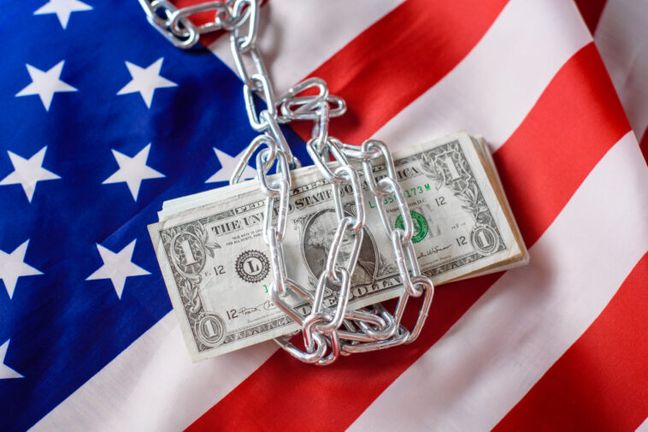Social inflation is a term originally coined by Warren Buffett, referring to the increase of insurance claims payouts and rising costs resulting from Nuclear Verdicts®.[i] California has long been considered a hotbed for social inflation due to its large population, high litigation rates, and plaintiff-friendly legal environment.[ii] In recent years, the trend has only continued to worsen.[iii] Indeed, what was once a California problem is now making its way across the nation in the wake of Nuclear Verdicts® and so-called nuclear settlements.
As the courts begin hearing more and more cases after lengthy shutdowns, Nuclear Verdicts® show no sign of slowing; juror attitudes about safety and jurors’ anti-corporate sentiment have been renewed.[iv] Nuclear Verdicts® are posted and shared across social media and news networks. Articles often focus on the corporation’s wrongdoing and the plaintiff’s suffering, perpetuating the anti-corporate sentiment already shared by many jurors. Advertisements for the plaintiff’s bar are everywhere: on TV, plastered across the internet – even on the billboards you see on your drive to work. In only a six-month period in 2022, the plaintiffs’ bar in California is estimated to have spent $34M on television advertising alone.[v] California’s cost of living is high, and there is a growing trend towards using lien physicians and litigation financing across the country. In this environment, it is no wonder social inflation is trending upwards – and fast!
So, how can defense attorneys, insurers, and their clients conduct better evaluations of their cases in light of social inflation?
1. Rethink Case Evaluation Metrics:
The defense must re-evaluate case evaluation metrics in the wake of social inflation. For instance, the defense must place more weight on verdicts and reported settlements post–pandemic with similar cases to get a sense of the average compensation awarded in a changed world. Understanding and communicating the reasonable costs of medical care, lost and future income, with consideration towards the cost of living and standard of living the plaintiff experienced before the injury is critical for accurate case evaluation. Moreover, it is crucial to ask the plaintiff questions to understand and quantify what non-economic damages could actually mean to them.
2. Analyze Jury Demographics:
Jury demographics play a vital role in social inflation. Americans are angry, and angry jurors drive Nuclear Verdicts®.
How can you get a good assessment of data in your venue? Look into the county’s population, including age, gender, ethnicity, income, education, and occupation. Identify the demographic trends. For example, identify whether the county has a high proportion of elderly residents, or if its workforce is in an education field (which tends to take out their anger on a faceless corporation).
Generally, review recent past verdicts in the county, and not just verdicts with similar facts! What trends do you see with slip and fall cases, or motor vehicle cases, or medical malpractice cases? Ask your attorney to identify these patterns or trends in the jury’s decision-making. Additionally, consider hiring a jury consultant who specializes in the area where the trial will take place. Their additional expertise can be critical. You are likely to gain valuable insight into possible jury behavior that will allow you to finetune and adjust not only your case valuation, but your trial strategy!
3. Hire Skilled Defense Attorneys:
Having skilled defense attorneys is critical in mitigating the impact of social inflation. Experienced defense attorneys can present a compelling story to the jury, highlighting the actual cost of damages (giving a number), and challenging the emotional appeal by the plaintiff’s attorney (accepting responsibility and telling the good news). Of course, we are talking about the Nuclear Verdicts® Defense Methods[vi], but you can help guide your counsel’s strategy by asking them for what they are accepting responsibility, what number they are going to give, and how they will argue non-economic damages.
4. Use Technology and Analytics:
Technology and analytics play a crucial role in evaluating cases accurately. The defense should use data analytics tools to analyze past verdicts, identify trends, and predict potential outcomes of a case. Insurance companies can also use artificial intelligence (AI) to analyze the facts of a case and provide a more accurate assessment of the claim’s value. Indeed, Schaefer City Technology’s product, NaVel™ allows claims professionals to receive ongoing analysis over the life of a claim to help detect which files have the potential to go nuclear before they do.[vii] Adapting to available technology is key to staying ahead of the curve and protecting clients’ interests.
5. Educate Stakeholders:
Finally, defendants and insurance carriers must educate their stakeholders about the impact of social inflation. This includes educating clients about the potential for higher claim payouts and the need for adequate insurance coverage. It also involves educating shareholders about the potential impact on the company’s financials and the steps being taken to mitigate the impact.
Social inflation is a significant challenge for every American. The plaintiff’s bar is driving up costs of previously minor claims by using lien doctors and third-party financing; third parties now have a vested interest in the outcome of the case, which in turn means plaintiffs are being pressured to reject reasonable settlement offers to maximize profit for third party funders.
This means the defense must take steps to evaluate their cases accurately. By rethinking case evaluation metrics, analyzing jury demographics, hiring skilled defense attorneys, using technology and analytics, and educating stakeholders, the defense can mitigate the impact of social inflation and ensure they are well-prepared for any potential claim payouts.
Keep Reading
More by this author
Sources
[i] Laura Board, “‘Obfuscated’ Social Inflation Illuminated Again as Insurers Fight Back” Insider Engage (Aug. 4, 2022), https://www.insiderengage.com/article/2af7kraaa28kwh5f7en7k/strategy/obfuscated-social-inflation-illuminated-again-as-insurers-fight-back
[ii] “Social inflation continues to dog casualty market on both sides of the Atlantic,” Clyde & Co. (Jan. 10, 2023), https://www.clydeco.com/en/insights/2023/01/social-inflation-continues-to-dog-casualty-market; “California”, ATR Foundation Judicial Hellholes (n.d.), https://www.judicialhellholes.org/hellhole/2019-2020/california/.
[iii] Jim Lynch, FCAS, MAAA, and Dave Moore, FCAS, CERA, “Social Inflation and Loss Development — An Update”, Casualty Actuarial Society and Insurance Information Institute (2023); “The State of Social Inflation: Costs, Causes & Potential Solutions”, OneInc. (n.d.), https://www.oneinc.com/resources/blog/the-state-of-social-inflation-costs-causes-potential-solutions.
[iv] Taylor Lyden, “What are nuclear verdicts and why are they occurring?”, ALM | PropertyCasualty360 (Jul. 21, 2023), https://www.propertycasualty360.com/2023/07/21/what-are-nuclear-verdicts-and-why-are-they-occurring/#:~:text=The%20nuclear%20verdict%20trend%20continues,landscape%20has%20amplified%20this%20effect; Lorie Sicafuse, Ph.D., “Impact of the COVID-19 crisis on jurors’ attitudes & decisions”, Courtroom Sciences, Inc. (n.d.), https://www.courtroomsciences.com/blog/litigation-consulting-1/impact-of-the-covid-19-crisis-on-jurors-attitudes-decisions-13.2
[v] California Legal Services Advertising Quarters 1-2, 2022 Report, American Tort Reform Association, September 2022
[vi] Tyson, Robert, Nuclear Verdicts: Defending Justice for All (2020)
[vii] “Navel™”, Schaefer City Technologies (n.d.), https://www.schaefercitytech.com/Navel.aspx.

 Author: Rob Olson
Author: Rob Olson
 Editor: Ashley Paige Fetyko
Editor: Ashley Paige Fetyko
 Cannabis Workers Allege Quota to Trim 4 Pounds a Day Violates the California Labor Code
Cannabis Workers Allege Quota to Trim 4 Pounds a Day Violates the California Labor Code
 The Ninth Circuit Reminds Us: Every Word Matters
The Ninth Circuit Reminds Us: Every Word Matters
 NO WAY, PRO SE! The Consequences of Abusing the Judicial System as a Pro Se Litigant in Colorado
NO WAY, PRO SE! The Consequences of Abusing the Judicial System as a Pro Se Litigant in Colorado
 Victim of Financial Mismanagement or Unlawful Retaliation? New Jersey City University Program Founder Claims School Retaliated After Reporting Alleged Sexual Harassment
Victim of Financial Mismanagement or Unlawful Retaliation? New Jersey City University Program Founder Claims School Retaliated After Reporting Alleged Sexual Harassment
 “Real Housewives” Gets a Reality Check
“Real Housewives” Gets a Reality Check
 Missing a Chapter: Insufficiency of Expert Deposition Testimony in Medical Malpractice Litigation
Missing a Chapter: Insufficiency of Expert Deposition Testimony in Medical Malpractice Litigation
 Crash Course: Why Summary Judgment Misses the Mark in Illinois Multi-Cause Limousine Crash Collision
Crash Course: Why Summary Judgment Misses the Mark in Illinois Multi-Cause Limousine Crash Collision
 Bitter Truths: Lead, Cadmium, and Defective Pleadings in California Chocolate Class Action
Bitter Truths: Lead, Cadmium, and Defective Pleadings in California Chocolate Class Action
 The Law of Unintended Consequences: Including Insurance Brokers in Litigation Strategy Communication May Waive the Attorney-Client Privilege
The Law of Unintended Consequences: Including Insurance Brokers in Litigation Strategy Communication May Waive the Attorney-Client Privilege
 To The Victor Goes the Spoils… All of the Spoils
To The Victor Goes the Spoils… All of the Spoils
 Florida Jury Awards $50 Million in Habitability/Mold Case
Florida Jury Awards $50 Million in Habitability/Mold Case
 Leveling the Playing Field: Defense Counsel Used “Honest Fouls” in California and Beat a $16 Million Jury Demand
Leveling the Playing Field: Defense Counsel Used “Honest Fouls” in California and Beat a $16 Million Jury Demand
 Landlords and Tigers and Bears – Oh My! How Landlords are Becoming the Villains of COVID-19 and What They Can Do About It
Landlords and Tigers and Bears – Oh My! How Landlords are Becoming the Villains of COVID-19 and What They Can Do About It
 California’s Supreme Court Opens a Path So Plaintiffs Can Recover Greater Nuclear Verdicts™ Against “Deep Pocket” Defendants
California’s Supreme Court Opens a Path So Plaintiffs Can Recover Greater Nuclear Verdicts™ Against “Deep Pocket” Defendants
 The California Court’s “Fastpass” to Trial within 120 days – Considerations in Approaching California’s Preference Statute in a Post-Pandemic World
The California Court’s “Fastpass” to Trial within 120 days – Considerations in Approaching California’s Preference Statute in a Post-Pandemic World